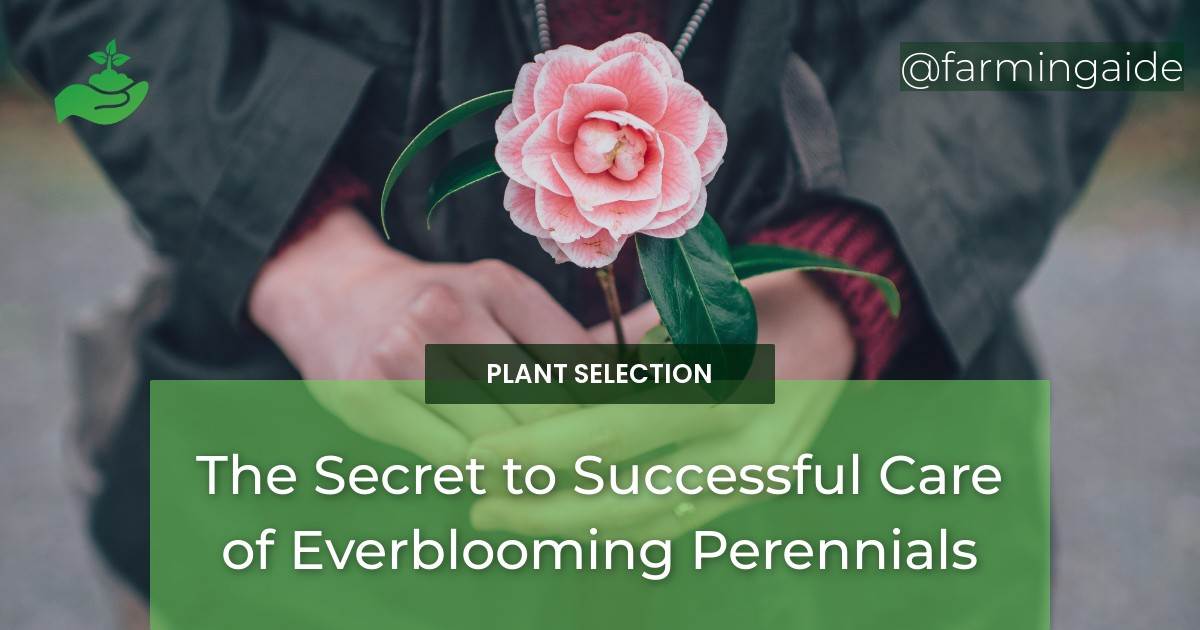Everblooming perennials are a perfect addition to any garden or landscape, as they provide beautiful blooms throughout the growing season. While they may require more care than other perennials, the reward is worth the effort. The secret to successful care of everblooming perennials lies in understanding their unique needs and providing proper care, from selecting the right plant to winterizing in colder climates.
In this article, we will dive deep into each aspect of care of everblooming perennials, so you can ensure your garden is filled with beautiful blooms year after year.
Table of Contents
The Secret to Successful Care of Everblooming Perennials
Understanding Everblooming Perennials
Before diving into the care of everblooming perennials, it’s essential to understand what they are and how they differ from other types of perennials. Everblooming perennials are plants that produce blooms multiple times throughout the growing season, rather than just once. This means they require more care to keep them healthy and blooming, but the result is a garden filled with color and beauty all season long.
Selecting the Right Everblooming Perennials
Choosing the right everblooming perennials is crucial to their success. Start by selecting plants that are well-suited to your climate and soil type, as this will make it easier to provide the care they need. Look for plants with strong stems, healthy leaves, and no signs of damage or disease. Some popular everblooming perennials include:
- Roses
- Daylilies
- Coreopsis
- Salvia
- Phlox
Planting Everblooming Perennials
Proper planting is key to the success of everblooming perennials. Start by preparing the soil with compost and other organic matter to ensure good drainage and fertility. Plant the perennials at the same depth they were grown in their container, and space them according to their specific requirements. Water the plants thoroughly after planting and monitor them closely for the first few weeks to ensure they are adapting well to their new environment.
Watering Everblooming Perennials
Watering is one of the most critical aspects of caring for everblooming perennials. These plants require consistent moisture throughout the growing season, so it’s essential to monitor the soil and water them as needed. In general, aim to provide one inch of water per week, either through rainfall or irrigation. Avoid overhead watering, as this can lead to disease and other problems.
Fertilizing Everblooming Perennials
Regular fertilization is essential to keep everblooming perennials healthy and blooming. Start by applying a balanced, slow-release fertilizer in the spring, and then follow up with additional applications throughout the growing season. Be sure to follow the manufacturer’s instructions and avoid over-fertilization, as this can lead to burned foliage and other problems.
Pruning Everblooming Perennials
Pruning is an important part of caring for everblooming perennials, as it helps to promote healthy growth and blooming. Start by removing any dead or diseased foliage or blooms, as these can harbor pests and diseases. Then, trim back the plant to shape it or remove any crossing or damaged branches. Different plants require different pruning techniques, so be sure to research your specific varieties.
ALSO READ
Preventing Common Problems
Pests
Pests can be a significant problem for everblooming perennials, so it’s essential to take steps to prevent infestations. Start by keeping the garden free of debris and weeds, as these can attract pests. Then, monitor the plants regularly for signs of pests such as aphids, spider mites, and thrips. Consider using natural or organic pest control methods, such as neem oil or insecticidal soap.
Diseases
Diseases can also be a significant problem for everblooming perennials, particularly in humid or wet conditions. To prevent diseases, start by providing good air circulation and proper spacing between plants. Avoid overhead watering, as this can lead to leaf spot and other fungal diseases. Be sure to remove any infected foliage or blooms immediately to prevent the spread of disease.
Winterizing Everblooming Perennials
Winterizing is essential for everblooming perennials in colder climates, as it helps to protect them from harsh winter conditions. Start by cutting back the foliage in the fall, leaving about two inches of stem above the soil. Then, apply a layer of mulch around the base of the plant to insulate the roots and protect them from freezing temperatures. In areas with severe winter weather, consider covering the plants with burlap or other protective material.
Maintaining Healthy Everblooming Perennials
Maintaining healthy everblooming perennials requires regular monitoring and care throughout the growing season. Be sure to water, fertilize, and prune as needed, and monitor the plants for any signs of pests or disease. Regular deadheading can also help to promote blooming and keep the plants looking their best.
Conclusion
With proper care and attention, everblooming perennials can provide a stunning display of color and beauty throughout the growing season. By understanding their unique needs and providing the right care, you can ensure your garden is filled with healthy, blooming plants year after year. Remember to select the right plants, plant them properly, and provide regular watering, fertilization, pruning, and pest and disease prevention to keep them healthy and blooming.


